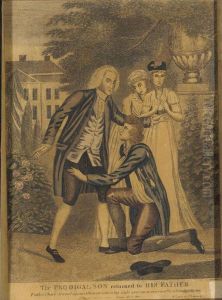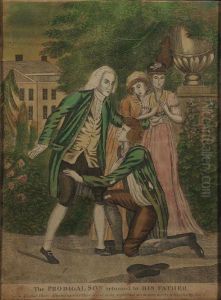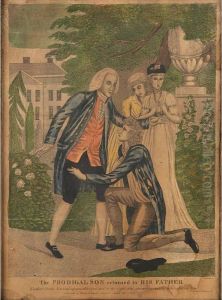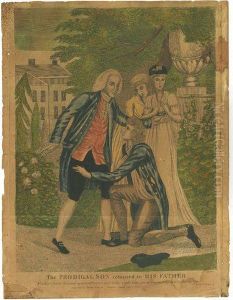Amos Doolittle Paintings
Amos Doolittle was an American engraver and silversmith, known as 'The Revere of Connecticut.' His birth took place on May 18, 1754, in Cheshire, Connecticut, and he was one of the earliest American-born artists to produce original art engravings. Doolittle was largely self-taught, yet he became an accomplished artist and craftsman, known for his detailed and historically significant works.
Doolittle's career as an engraver began in earnest after he joined the New Haven militia during the American Revolutionary War. It was around this time that he created a series of engravings depicting various scenes from the war, which are considered some of the most accurate and informative pictorial representations of Revolutionary War events. These images, including his famous engravings of the battles of Lexington and Concord, which he produced after visiting the sites and interviewing eyewitnesses, have been invaluable resources for historians.
Throughout his life, Doolittle remained in New Haven, Connecticut, where he continued to develop his craft. He produced a wide range of works, including bookplates, maps, political cartoons, and even sheet music. Doolittle's engravings were not limited to historical events; he also produced portraits, landscapes, and illustrations for books and magazines. His work reflects the emerging sense of American identity and the importance of documenting the new nation's history.
Doolittle's contributions extended beyond the arts. He was also involved in his local community and was a member of the Amicable Society, which focused on mutual aid and philanthropy. Amos Doolittle died on February 2, 1832, in New Haven, leaving behind a legacy of art that provides a rare and invaluable glimpse into the Revolutionary era and the early years of the United States.



